Frida Kahlo Facts – All Important Facts About Frida Kahlo
Who was Frida Kahlo and what was Frida Kahlo famous for? Those are probably the first questions you might be asking, but beyond the basic facts about Frida Kahlo, there are so many fascinating things to learn about this incredibly important artist. In this article, we will cover some of the most important Frida Kahlo facts as well as a few Frida Kahlo fun facts!
Table of Contents
- 1 The Most Important Facts About Frida Kahlo
- 1.1 Frida Kahlo Told People Her Birth Synchronised With the Start of the Mexican Revolution
- 1.2 Frida Kahlo Suffered From Many Illnesses as a Child
- 1.3 At First, She Wanted to Be a Doctor
- 1.4 A Horrible Accident Was the Catalyst for Her Art
- 1.5 Frida Kahlo is Regarded as an Important Figure of the Feminist Movement
- 1.6 Her Relationship With Diego Rivera was Legendary
- 1.7 Frida Kahlo Did Not Consider Herself a Surrealist Artist
- 1.8 Frida Kahlo’s Artworks Were Symbolic of Her Personal Journey
- 1.9 Most of Her Life Was Spent in Constant Pain
- 1.10 She was Recognized Within Her Lifetime
- 2 Some More Frida Kahlo Fun Facts
- 3 Frequently Asked Questions
The Most Important Facts About Frida Kahlo
Many lists will answer questions such as “Where was Frida Kahlo born?” and “When did Frida Kahlo die?”, but for someone that lived such an intriguing life, there is so much more to consider and explore when regarding interesting and important Frida Kahlo facts. Not only was she a pioneering artist that represented women in a male-dominated field, but she was also a very rare example of an artist born in Mexico to break through into the international art market. Also have a look at our “Frida Kahlo Quotes” article.

Frida Kahlo Told People Her Birth Synchronised With the Start of the Mexican Revolution
When answering the question “When was Frida Kahlo born?”, we discover something rather interesting about how the artist wanted the world to view her birth. Frida Kahlo was born on the 6th of July in 1907 in Mexico City, although she frequently pretended to have been born in 1910, three years later, so that others would identify her with the Revolution in Mexico, which began in 1910.
Kahlo became an icon of Mexican tradition, particularly native heritage, although she was not totally Mexican: her father, Carl Wilhelm Kahlo, was actually born in Germany, of either Hungarian or Jewish descent, as Frida asserted, or from a continuous line of Lutherans, according to recent findings. Matilde Calderon, Frida’s mother, was of native Mexican and Spanish heritage. Frida Kahlo was a passionate patriot who constantly wanted to be an advocate for the underprivileged. Her choice to dispute her birth date was political in nature, and it was not made only to make her seem younger.
When she was born, she was given the name Magdelena Frida Carmen Kahlo, so Frida Kahlo’s nickname is actually her second name “Frida”.
Frida Kahlo Suffered From Many Illnesses as a Child
Frida Kahlo was born following the death of her mother’s son. Her mother, who was depressed, sent her to a babysitter. She was not a caring or warm person. The mood at home was extremely depressing. Apart from problems within her parents’ family and two absent half-sisters since they were taken to the nuns, her father’s enterprise did not thrive throughout the revolution in Mexico. Furthermore, Frida’s health is precarious. She was afflicted with spina bifida, which deforms her spine, and she contracted polio when she was only six years of age.
She was in continuous agony as a result of this terrible viral condition.
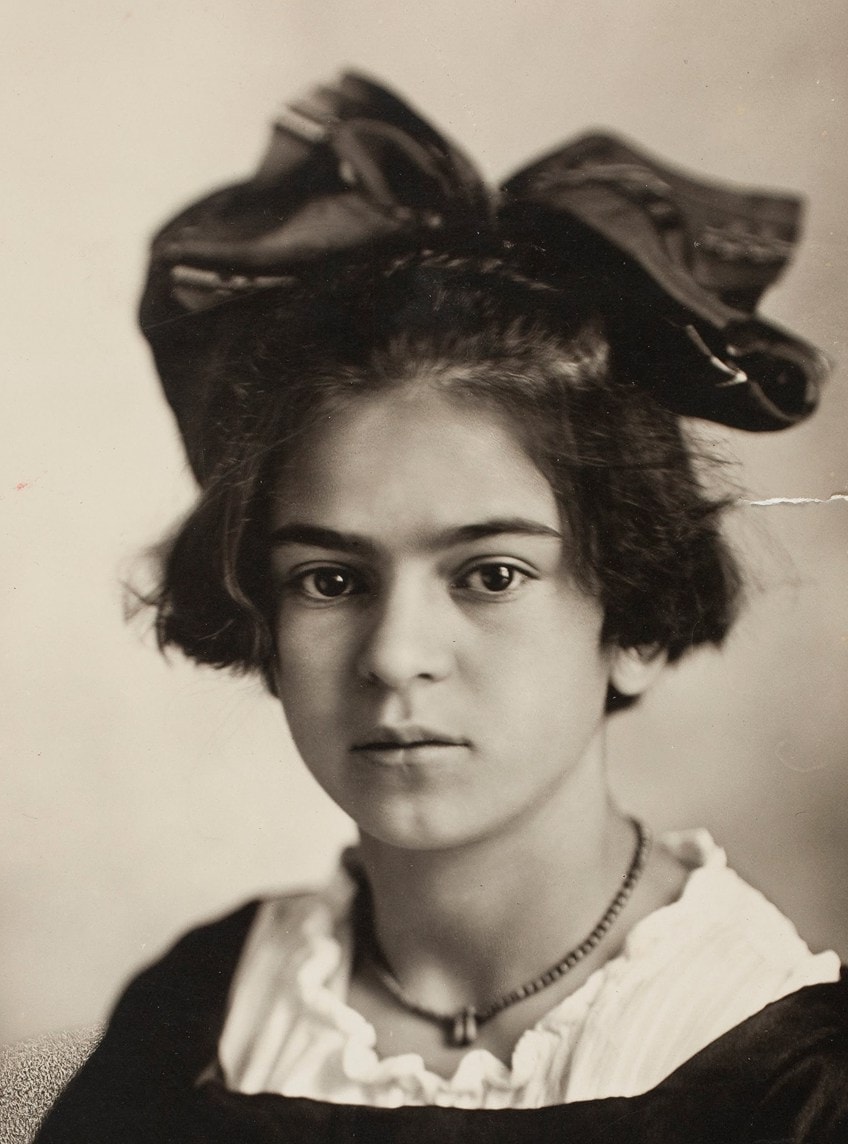
When asking the question “How tall was Frida Kahlo?”, we discover that one leg was longer than the other as her right leg stopped developing, resulting in a deformity. She is also isolated from other youngsters as a result of the condition. She is unable to attend school and is known as “Frida the Limp.”
Later, her first experiences at school were complete shambles.
She enrolled at a German school against her father’s preferences but was quickly dismissed for defiance. This incident demonstrates a passionate and wild personality from a young age. She subsequently registered in a school for female instructors, where she stayed for a brief period of time. When her family found out that she had been physically molested by one of the professors, she was taken from the facility.
At First, She Wanted to Be a Doctor
Frida Kahlo did not always dream of becoming an artist. Indeed, her father instilled in her a love of beautiful art from a young age. Her father’s colleague, an engraver, even offered her some sketching lessons. She also assisted her father’s commercial endeavors by editing, processing, and coloring images. Nonetheless, she regarded art as a pastime. Kahlo was among the first 35 females admitted into the Escuela Nacional Preparatoria when she was 16 out of a possible 2,000 pupils. At that moment, it was the top institution in the country.
She had a significant enthusiasm for natural sciences and aspired to be a doctor eventually.
A Horrible Accident Was the Catalyst for Her Art
On her way back towards home on the 17th of September in 1925, her bus collided with a tramway. This mishap sealed her destiny. Despite the fact that she lived, she was severely harmed. Her pelvic region was punctured by a metal rod, resulting in a series of miscarriages. In addition, she suffered 11 fractures in her right thigh. Her foot was entirely shattered, and so too was her shoulder. Her neck and spine had both been fractured. She was in tremendous pain and had been in bed for many months.
She required 32 operations and would have to wear 28 corsets throughout the rest of her life.

She was obliged to remain in bed at home. She remarked at the time, “I am not gone, and I have a purpose to remain.” Painting is the explanation behind this.” Her family pushed her to produce because her medical studies were jeopardized. They asked her to create a customized easel as well as a bed that had a mirror on the ceiling. Art became an avenue for all of her ailments as well as a motivator for her rehabilitation. She created a significant series of self-portraits. They would remain her favorite subject.
Frida Kahlo is Regarded as an Important Figure of the Feminist Movement
In 1928, she joined the Communist Party at the urging of photographer Tina Modotti. Kahlo was only 21 years of age at the time and had only recently recovered from her injury. Nonetheless, as an adolescent, she became committed to the protection of social equality and the development of Mexican heritage. The Escuela Nacional Preparatoria, in fact, applauded this. This patriotic philosophy stressed Mexico’s native history in order to establish the country’s supremacy and resist Western colonialism.
As a result, Frida Kahlo and nine other women colleagues founded the group known as the “Baseball Caps”.

They debated Russian affairs and books, rejecting the conventional ideals of Mexico’s macho and militaristic society. Many of them rose to prominence within Mexico’s educated class. Thus, inside the Communist Party, she was especially devoted to women ‘s independence and equity, in conjunction with the class conflicts. As a result, she rose to prominence among feminist painters. She was non-submissive, religious, and contemporary, and she accepted her sexuality at a period when few females ventured to.
Her Relationship With Diego Rivera was Legendary
In 1928, she also had a pivotal encounter with the visual artist Diego Rivera. He was 20 years older and a Communist Member of the party. He was already well-known for using his art to benefit the public by making enormous frescoes funded by the state.
Their shared interests in art and ideology, as well as their mutual adoration, combine to form a fusional duo of creators.
When they married in 1929, their marriage was both intense and disastrous. “I had two terrible accidents in my lifetime,” she said. The first was inflicted by a bus, and the second by Diego. He did, in fact, cheat on her multiple times and she reciprocated by doing the same.
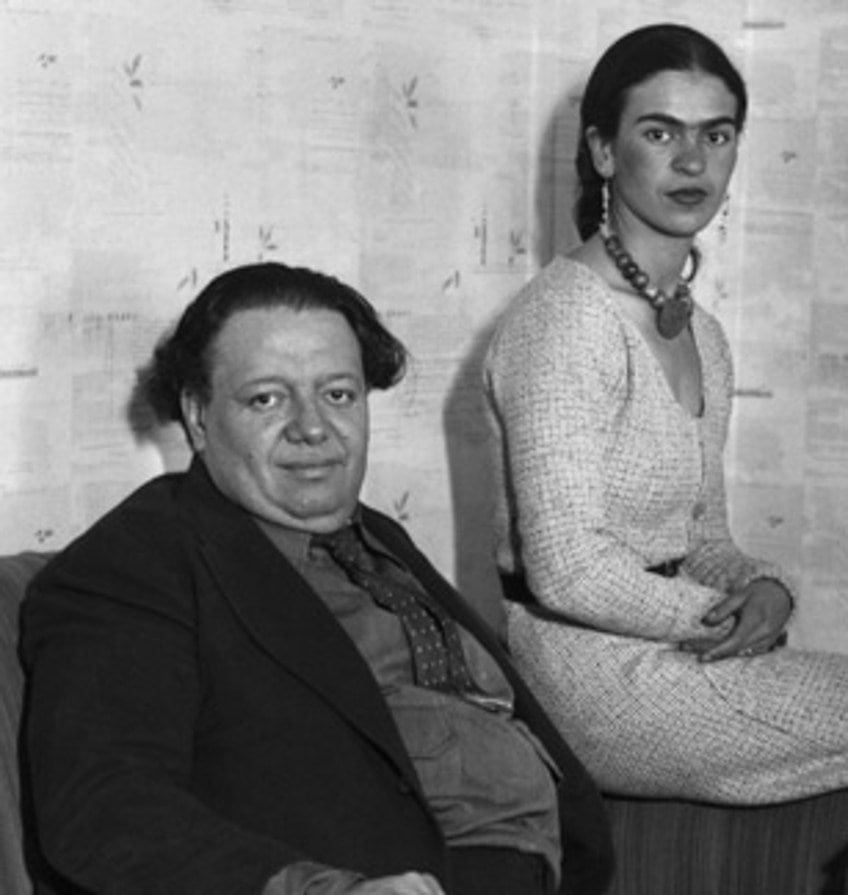
In 1935, she considered her husband’s adulterous affair with her sister to be a heinous betrayal. Despite the fact that they have been away from the marital house for several months, their affection remained unwavering. Frida’s relationship was further jeopardized by her connection with communist leader Leon Trotsky. Indeed, the Russian diplomat had been sheltered at their residence in 1937 after being awarded political refuge in Mexico. After divorcing in 1938, they rejoined in 1940 and remained together until their deaths.
The home they resided in during their previous marriage exemplifies their bond. A bridge connects two independent dwellings, one blue for Frida and one pink and white for Diego. It’s a reflection of their relationship: autonomous but inextricably linked.
Frida Kahlo Did Not Consider Herself a Surrealist Artist
When surrealist André Breton visited Mexico City in 1938, he found Frida Kahlo’s paintings. He was so taken with her that he asked her to Paris in 1939 to participate in a big show in Mexico. However, she was dissatisfied with both the town and the exhibit. According to her, the occasion was a “smokehouse.” Her country was way too satirized and charming. Furthermore, her artworks were misconstrued.
“It’s not right,” she said. ” I’ve never sketched a dream. What I depicted was my experience. Moreover, her works are, above everything, personal for her.

Misinterpreted, she scorned and dismissed this handful of arrogant and pompous academics. In correspondence with Nickolas Murray, she said of the Surrealists, “I’d sooner sit on the ground of the Toluca market peddling tacos than have anything whatsoever to do with those awful Parisian intellectuals.” Nonetheless, her journey to France marks the start of her worldwide reputation. Picasso gifted her ivory earrings in the appearance of hands, clothing designer Schiaparelli produced her outfit for one of her artworks, and the Louvre purchased one of her self-portraits.
Frida Kahlo’s Artworks Were Symbolic of Her Personal Journey
Her art is inextricably linked to her life. Frida Kahlo’s best subject was her own portrait from the start of her creative activity, while she was incapacitated following her accident. She shows her spiritual and bodily anguish without a shred of humility or surrender. Among the most well-known is The Broken Column (1944), which depicts her body wounded by a series of medical procedures. In total, she created approximately 70 self-portraits to tell her narrative. She represents herself as a child in hindsight, like in My Nurse and I (1937), and occasionally alongside her family. In the artwork Henry Ford Hospital (1932), she also depicts her marriage and describes their miscarriages.
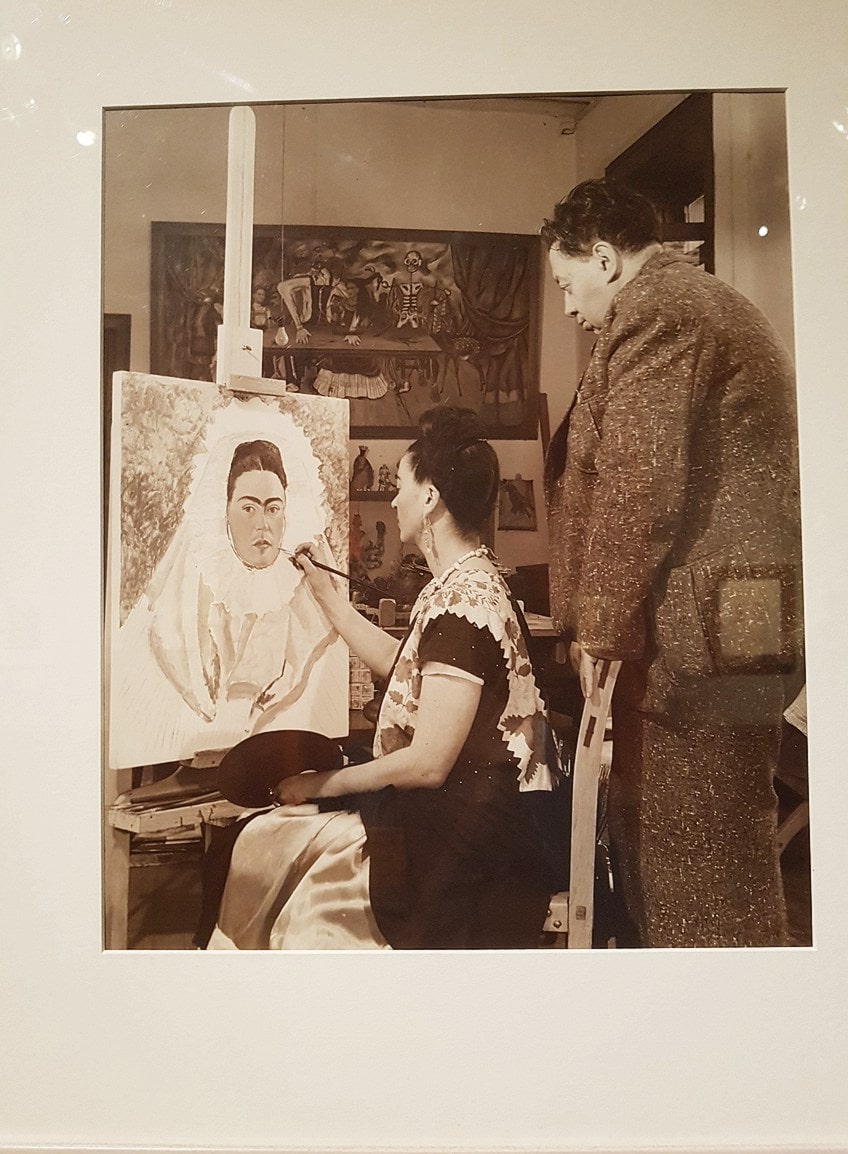
But it is her “Mexicanness” that she emphasizes in her portrayals of herself. It demonstrates her strong love for her country’s cultural history. In fact, she frequently wore the China Poblano, a vibrant traditional garment decorated with flower embroidery. She also commonly used flower-adorned tresses or buns.
More broadly, Mexican heritage was shown in several of her works, particularly through its wildlife and flora.
Her creations include parrots and cactus, as well as other parts of local tradition such as exquisite corpses and flags. Her political dedication is also evident in numerous of her works. Her Marxism Will Heal the Sick (1954) give testament to this. Many specters of death are discernible near the conclusion of her lifetime when she portrayed herself as a deer stabbed with arrows or alongside corpses.
Most of Her Life Was Spent in Constant Pain
Frida Kahlo was in chronic discomfort from her spine to her toes, despite her positivity and unwavering delight. Her health worsened, especially after 1950. Her spine was operated on seven times. Her doctor banned her from leaving her bed for her first monographic exhibit in 1953. She then requested that her bed be brought to the gallery, where she staged a triumphal entry as if she were a princess on her throne. She had her leg removed soon afterward due to gangrene from one of her operations.

She fell into profound despair as a result of this occurrence. Ultimately, she perished a few days past her 47th birthday in 1954, from pneumonia. “I pray it will be a pleasant departure and I pray I never return back,” she wrote soon before her death. ” With wide arms awaiting death, the possibility of suicide is not completely ruled out.”
Her requests were followed, and she was cremated. She had not wanted to be buried laying down since she had endured too much pain from that posture.
She was Recognized Within Her Lifetime
After residing in the shadows of her spouse for a long period, her admission to the Seminario de Cultura Mexicana in 1942 attests to her acceptance by official institutions. The board was a government-created association of well-known artistic figures dedicated to promoting Traditions through exhibits, seminars, and journals. Following that, in 1943, she was tasked with instructing art in one of the School of Fine Arts classes. The Mexican Federal Bank opted to adorn one side of a new 500 peso note with her face and the other with Diego Rivera’s in 2010.

Not only is it a landmark in the annals of art, but it also became legislation in the 1990s for the Chicano movement, which fought for Mexican-American civil rights. Frida Kahlo is an icon more than an artist. She is an icon of Mexico and, more specifically, of females. Her personal strength and individuality have made her an icon for feminism and LGBT organizations. Her figure has inspired numerous painters and has been professionally re-exploited. Despite being reproduced on coffee mugs, T-shirts, and other merchandise, she has remained a symbol of contemporary culture and public art.
Without a question, the anti-capitalist that she was would be rolling over in her grave saw her works and likeness being misappropriated! But she’d be relieved to know that her creative and political clout hasn’t dwindled.
Some More Frida Kahlo Fun Facts
Above we covered some of the most important facts about Frida Kahlo. These facts helped to give us an understanding of the artist and her life. Now let us look at some more Frida Kahlo fun facts.
Frida’s Art Reached International Acclaim
The Louvre purchased Kahlo’s The Frame in 1939, earning it the honor of the first piece by a Mexican painter from the 20th century to be acquired by a world-renowned institution. Despite her achievements, Kahlo was most recognized for the majority of her life throughout the 20th century as the spouse of Diego Rivera, whom she wedded in 1929. Kahlo, on the other hand, has been recognized for her own worth since the 1980s. Several memoirs have been published, and films have been created about her life. Her previous residence is now a museum.
The largest exhibition of her works ever held, staged last summer to commemorate the 100th anniversary of her birth, smashed all attendance records at Mexico’s Museum of Fine Arts Palace, despite being only open for two months.
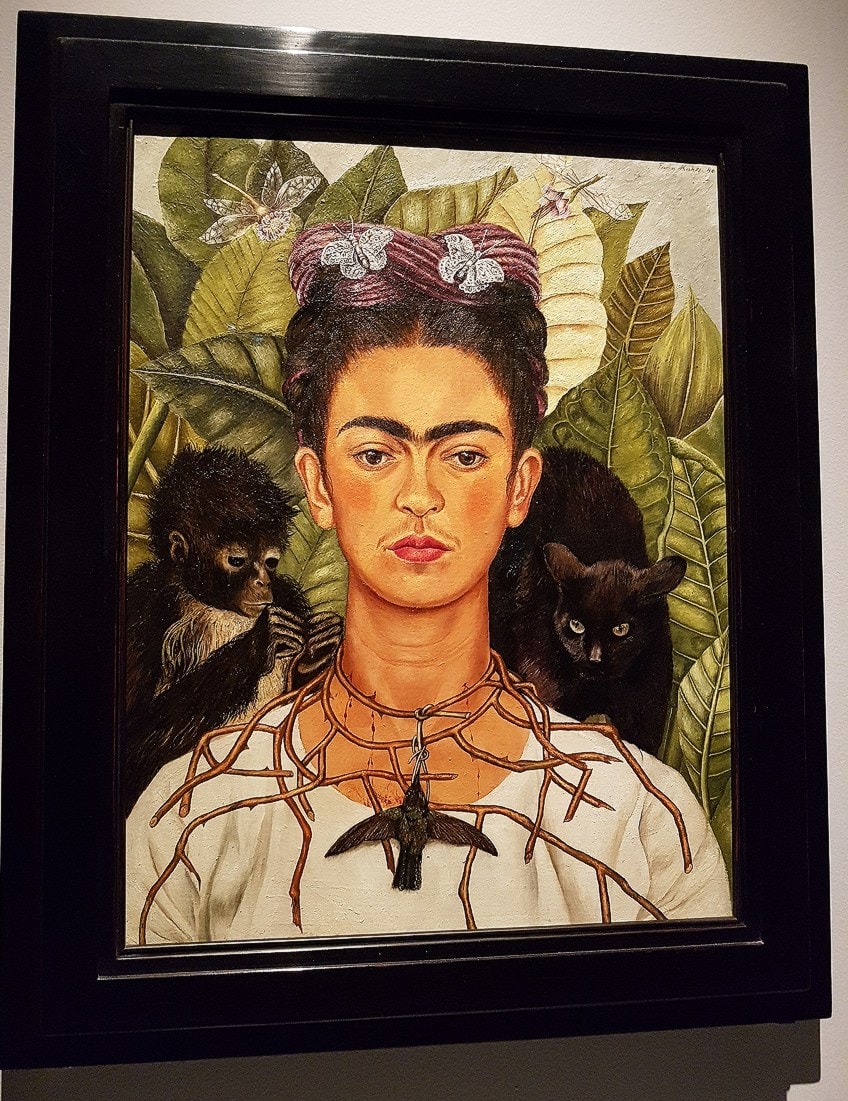
Frida Kahlo Loved Both Men and Women
Rivera and Kahlo’s relationship was turbulent, with both having many relationships. Frida had relationships with both men and women. Rivera had a relationship with Kahlo’s sister, which enraged her. They separated in 1939 but rejoined the following year. Despite the fact that their second marriage was just as tumultuous as their first, Kahlo stayed wedded to Rivera until her death.
She Had a Romantic Encounter With the Red Army’s Founder
The legendary Russian communist Leon Trotsky, the father of the Red Army, arrived in Mexico to seek political refuge from the Soviet Union. He had an encounter with Kahlo after first staying with Rivera. To honor her brief love, Kahlo made a painting titled Self-Portrait Dedicated to Leon Trotsky (1937).
Kahlo Was Regarded as an Icon of Style
Consider again if you think of Frida as a disabled, unloved, and ugly lady. She was and still is a beautiful symbol, particularly in her day. A powerful, avant-garde lady, inspiration, example, and role model for many females. It’s no wonder that she became an influence on artists and designers. Her face is a work of art in its own respect.
She created her own haircuts, embellishing them with wool threads, colored streamers, and wildflowers.
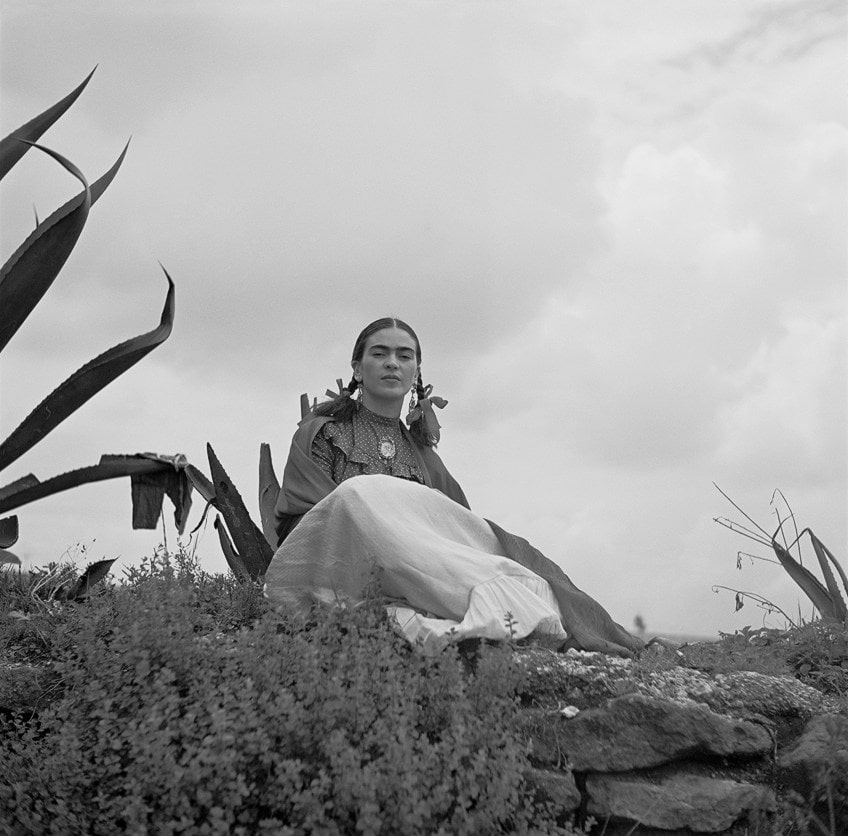
No one can ignore her ultra-individual aesthetic, which includes red lips, one unibrow (particularly highlighted in all of her artworks), and a bold expression on her face. Kahlo’s artwork also raises issues about women’s relationships with their bodies. Hers was to be afflicted with illness. Her abdominal muscles were then ripped. As a result, she was unable to create a baby.
Her Artwork Set Latin American Records
Frida Kahlo was a pivotal player in Mexico’s Neomexicanism Art Scene, which arose in the 1970s. Because of the traditional aspects in her work, it has been dubbed folk art, and others have dubbed it Surrealist, but Kahlo herself stated, “They mistook me for a Surrealist, but I’m not really. I’ve never sketched a vision. I created my own universe by painting it.” One of her self-portraits sold for US$5.6 million in 2006, breaking a sale record for a Latin American artistic work.
We hope you have enjoyed this list of facts about Frida Kahlo. Not only was she an important figure for females, but also for Mexicans. Her artworks were highly personal and represented the struggles she experienced throughout her tumultuous lifetime. AT one time in her early adulthood she had dreams of being a doctor, but due to terrible circumstances ended up being a patient for the majority of her life instead. Yet it was due to these very same ailments that her amazing artworks exist in the first place.
Frequently Asked Questions
What Was Frida Kahlo Famous For?
Frida Kahlo completed 143 paintings over her lifetime, 55 of which are self-portraits. “I depict myself because I am so frequently by myself and also I am the subject I understand most,” Kahlo explained. Her self-portraits frequently incorporate reflections of psychologically and physically induced scars. Her self-portraits are widely regarded as among the best ever produced.
How Tall Was Frida Kahlo?
Frida Kahlo was approximately 1,6 meters tall, as measured when she was around 47 years of age. Due to her ailments with her legs and feet, she was not properly balanced. When she was younger, Frida Kahlo’s nickname was “Frida the Limp”.
Who Was Frida Kahlo?
Frida Kahlo was a female painter from Mexico. Her artworks reached global popularity, mostly for her biographical self-portraits. Her works were renowned for their uniqueness as well as representation of Mexican culture.
When Was Frida Kahlo Born and When Did Frida Kahlo Die?
Frida Kahlo was born on the 6th of July in 1907. She very often told people that she was born a few years later so that it would seem like she was destined to be born at the same time as the revolution in Mexico. She passed away on the 13th of July in 1954.
Where Was Frida Kahlo Born?
Frida Kahlo was born in a village called Coyoacán. Coyoacán is located in Mexico City. She would also die in the same place.
Isabella studied at the University of Cape Town in South Africa and graduated with a Bachelor of Arts majoring in English Literature & Language and Psychology. Throughout her undergraduate years, she took Art History as an additional subject and absolutely loved it. Building on from her art history knowledge that began in high school, art has always been a particular area of fascination for her. From learning about artworks previously unknown to her, or sharpening her existing understanding of specific works, the ability to continue learning within this interesting sphere excites her greatly.
Her focal points of interest in art history encompass profiling specific artists and art movements, as it is these areas where she is able to really dig deep into the rich narrative of the art world. Additionally, she particularly enjoys exploring the different artistic styles of the 20th century, as well as the important impact that female artists have had on the development of art history.
Learn more about Isabella Meyer and the Art in Context Team.
Cite this Article
Isabella, Meyer, “Frida Kahlo Facts – All Important Facts About Frida Kahlo.” Art in Context. November 21, 2021. URL: https://artincontext.org/frida-kahlo-facts/
Meyer, I. (2021, 21 November). Frida Kahlo Facts – All Important Facts About Frida Kahlo. Art in Context. https://artincontext.org/frida-kahlo-facts/
Meyer, Isabella. “Frida Kahlo Facts – All Important Facts About Frida Kahlo.” Art in Context, November 21, 2021. https://artincontext.org/frida-kahlo-facts/.











